Related Research Articles
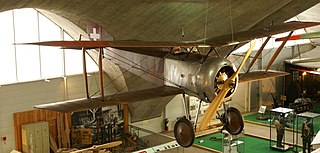
The Hanriot HD.1 was a French World War I single-seat fighter aircraft. Rejected for service with French squadrons in favour of the SPAD S.VII, the type was supplied to the Belgian Army′s Aviation Militaire Belge and the Royal Italian Army′s Corpo Aeronautico Militare, with both of which it proved highly successful. Of a total of about 1,200 examples built, 831 were produced by Italian companies under licence.
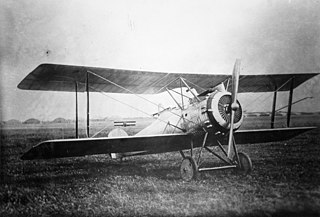
The Hanriot HD.3 C.2 was a two-seat fighter aircraft produced in France during World War I.
The Hanriot HD.17 was a French trainer seaplane of the 1920s. It was essentially a floatplane version of the ubiquitous HD.14 with a revised tail and a more powerful engine. Over 50 examples were operated by the Aéronautique Maritime, of which seven were converted to landplanes. A small number of HD.17s were exported to Estonia and Latvia. Further development resulted in the HD.41H.

The Hanriot H.41 was a military trainer aircraft produced in France in the 1920s. It was a further development in the family of aircraft that had commenced with the HD.14 in 1920, and incorporated a number of design features that had been developed for other members of that family. Like those other aircraft, however, it was a conventional, two-bay biplane with unstaggered wings of equal span.

The Hanriot HD.19 was a military trainer aircraft produced in France in the 1920s. Part of the family of designs that began with the HD.14, it was a two-bay biplane with unstaggered wings of equal span. The pilot and instructor sat in tandem, open cockpits. While the HD.14 and most of its derivatives were powered by rotary or radial engines, the HD.19 had a Hispano-Suiza Vee-8.

The Hanriot HD.28 was a military trainer aircraft developed in France in the 1920s as a modernised version of the HD.14 for export markets. The principal difference between the types was that while the HD.14 had an entirely wooden structure, the HD.28's structure was almost entirely of metal. The landing gear was also of more conventional design, with only one wheel on each main unit, plus small anti-noseover skids. The two tandem cockpits of the HD.14 were replaced by a single, long cockpit in which both pilot and instructor sat.

The Hanriot HD.32 was a military trainer aircraft built in France in the 1920s. Derived from the HD.14 and sharing the same basic configuration as it, the HD.32 was a substantially revised design, with redesigned tailplane, undercarriage, and wings of shorter span. The HD.14's wooden construction was replaced in part with metal structure.

The Hanriot H.43 was a military utility aircraft produced in France in the late 1920s and early 1930s which was primarily used by the Aéronautique Militaire as a trainer. While Hanriot had spent most of the 1920s manufacturing further and further developments of the HD.14 that had flown in 1920, the H.43 was an entirely new design. It was a conventional single-bay biplane with staggered wings of unequal span and a fuselage of fabric-covered metal tube. Accommodation for the pilot and passenger was in tandem, open cockpits and the main units of the fixed, tailskid undercarriage were linked by a cross-axle.
The Hanriot HD.8 was a short-lived French fighter prototype of the 1910s.
The Hanriot HD.7 was a French fighter prototype of the 1910s.

The Hanriot H.35 was a 1920s French intermediate training monoplane designed and built by Avions Hanriot.
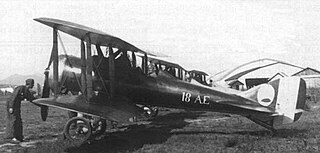
The Nieuport-Delage NiD 32 was a French single-seater fighter produced by Nieuport during the period between the two World Wars. The aircraft was designed in response to a request from the French Navy for an aircraft capable of launching from a platform: the NiD 32 competed with other planes, such as the Hanriot HD.12 and the SPAD S.XV. In addition to the NiD 32, Nieuport also submitted the NiD 29. The Navy selected the Nieuport NiD 32, and set about to test it in March 1920 on a platform. The results were disappointing, as the platform could barely support the aircraft, even when it was unarmed.
The Hanriot HD.5 was a French two-seat fighter aircraft prototype, built towards the end of World War I. A single-engine biplane with an unusually narrow gap between the upper and lower wings, it did not enter production.
The Hanriot HD.20 was a French single seat shipboard fighter aircraft prototype completed in 1923. Only one was built.

The Lorraine Hanriot LH.130 is a French racing aircraft designed and built in the early 1930s, to compete in the Coupe Michelin air races.
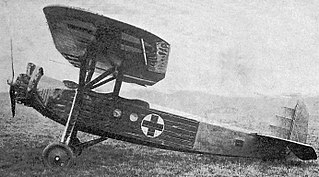
The Lorraine-Hanriot LH.21S was designed and built in 1930 to meet a French government requirement for a small air ambulance capable of operating in the colonies. It did not reach production.
The Hanriot H.34 was a basic trainer designed in France in 1924 which did not reach production. It was a parasol wing aircraft, seating two in tandem.

The Hanriot HD.18 was a three-seat colonial police aircraft built by Hanriot in the early 1920s.
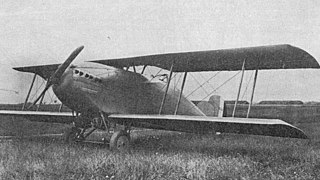
The Hanriot HD.24 was a two-seat colonial police biplane aircraft built by Hanriot in the early 1920s.
The Heinkel HD 44 was a special-purpose light transport aircraft developed in Germany in the 1920s.
References
- ↑ Parmentier, Bruno. "Hanriot HD.40". Aviafrance (in French). Paris. Retrieved 7 February 2019.CS1 maint: discouraged parameter (link)